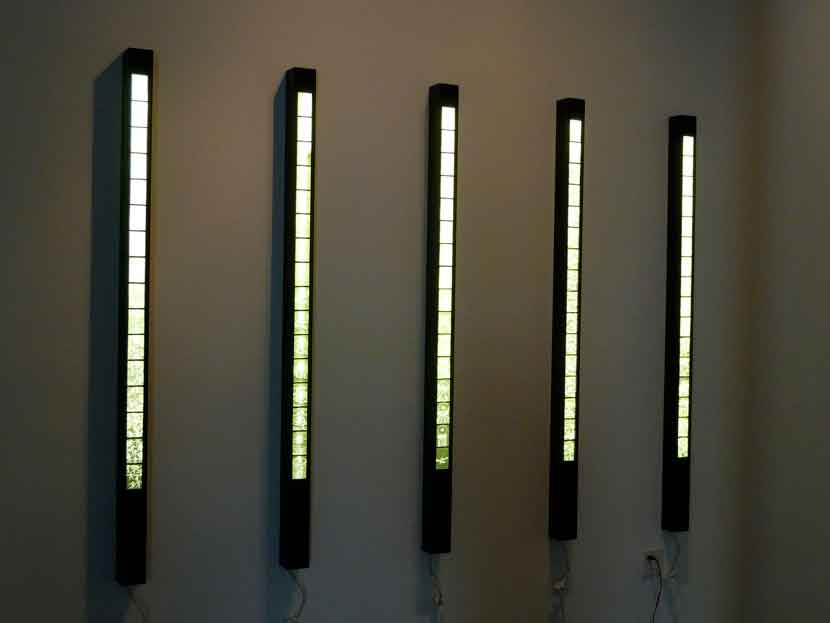« Reviews
Travelling in Space
Lélia Mordoch Gallery - Miami
By Raisa Clavijo
“Travelling in Space” assembled artists who explore time and space through their oeuvre. The exhibition included works by Robert Blanc, Emmanuel Fillot, Yukio Inamura, Laura and Ricardo Nillni, Keith Long, Joe Neill and Daniel Fiorda.
Curatorship of this exhibition arose from ideas that Immanuel Kant proposed in his Critique of Pure Reason regarding these two notions. Kant spoke of space and time as relative concepts whose understanding depends on the intuition or perception each individual has of them based on his or her own experience.
Of note was the work of Neill, who is fascinated by urban space; he visualizes it as an affirmation of the boundless creativity of the human mind. “Travelling in Space” included examples of his “towers,” as well as sketches of several works from this series. The artist visualizes these pieces as being modern “towers of Babel,” which reach out to touch the sky in a vain attempt to reach eternity. They are sketches of urban edifices that combine the interior world of the creator with the image that his experience has constructed of the world outside.
Neill’s towers rise like living organisms, invading and communing with space, organisms responding to the internal logic of nature because they have been created by man-like urban visions that are merely miniature versions of the universe.
For his part, Robert Blanc, in L‘Âge d‘Or, explores the concept of time as a continuous and eternal process. The piece consists of a group of black-and-white drawings mounted in small light boxes. The drawings are reminiscent of the glyphs of ancient civilizations; in them are recurring symbols, such as the egg associated with the birth of life, and the spiral associated with eternity and continual rebirth.
In Emmanuel Fillot’s boxes, time appears to have stood still. In them, stones, feathers, snails, pieces of wood, etc., appear to float in space-frozen images of an instant of chaos, of destruction, whose terrible beauty is eternally preserved behind a sheet of Plexiglas.
In their videos, Laura and Ricardo Nillni address space and time in a very interesting way. In Elogio de la sombra, the narrator reads Borges’ homonymous poem as a series of images appear, evoking the past. The present time does not exist; the present is our memory of yesteryear, an eternal past, breaking off in images that flow through our minds like the gullies of a river.
Sistina also revolves around the idea that time and space only exist in memory. Memories dissipate into fleeting images. At times they are superimposed and succeed in creating a discernible scene, but is it real or merely a figment of one’s imagination? In Là ou je ne suis plus, space seems to strangely escape from the scene. The camera is situated at ground level, thereby adopting an egocentric position, while the wilderness appears to revolve around it in a never-ending voyage to nowhere.
The works gathered in “Travelling in Space” propose a vision of the world from a metaphysical perspective, in which time and space exist only as reflections in the mind of the individual.
(September 8 - October 6, 2012)
Filed Under: Reviews





































Leave a Reply
You must be logged in to post a comment.